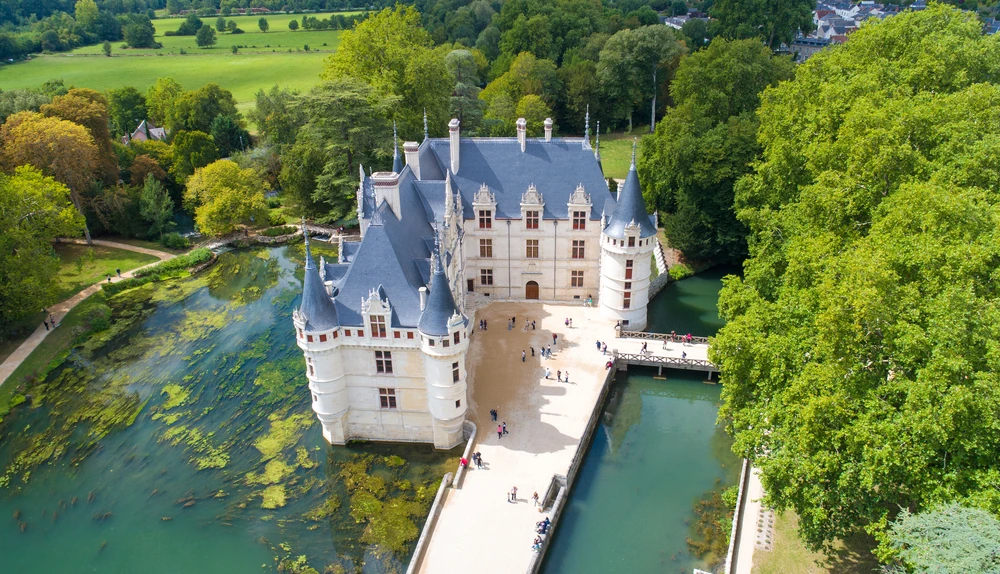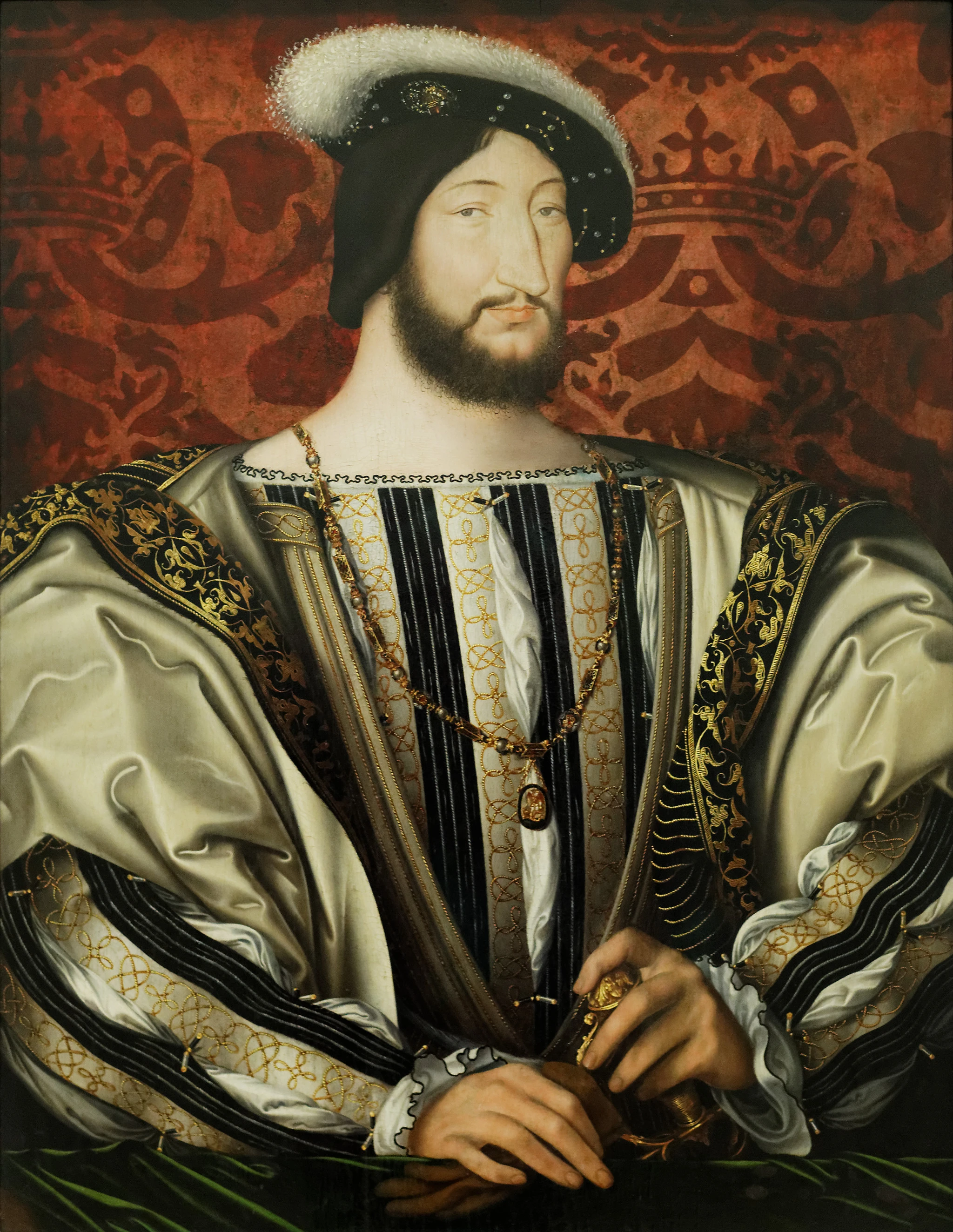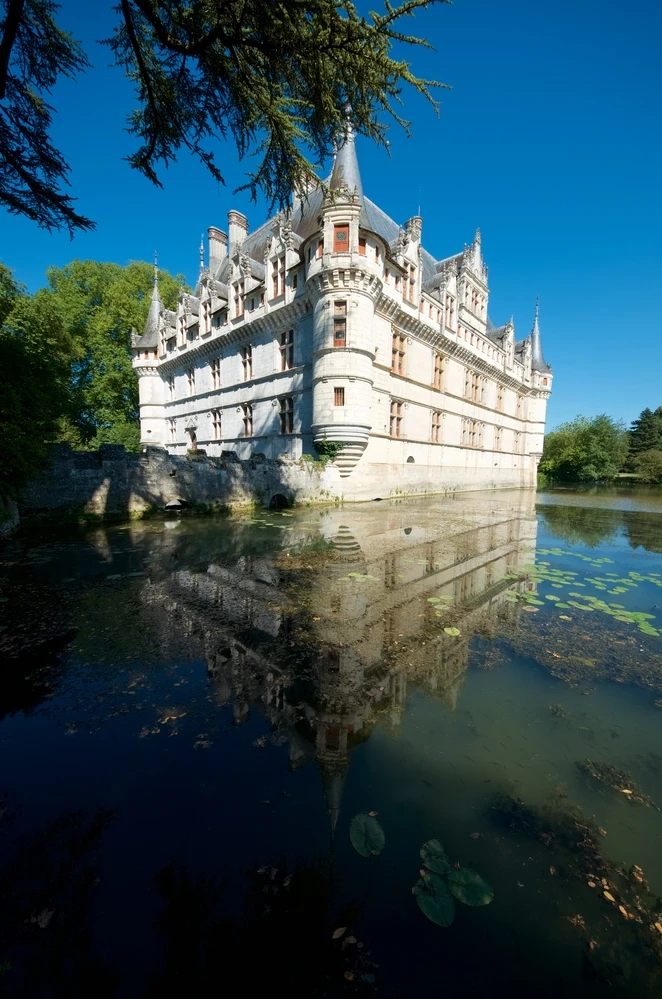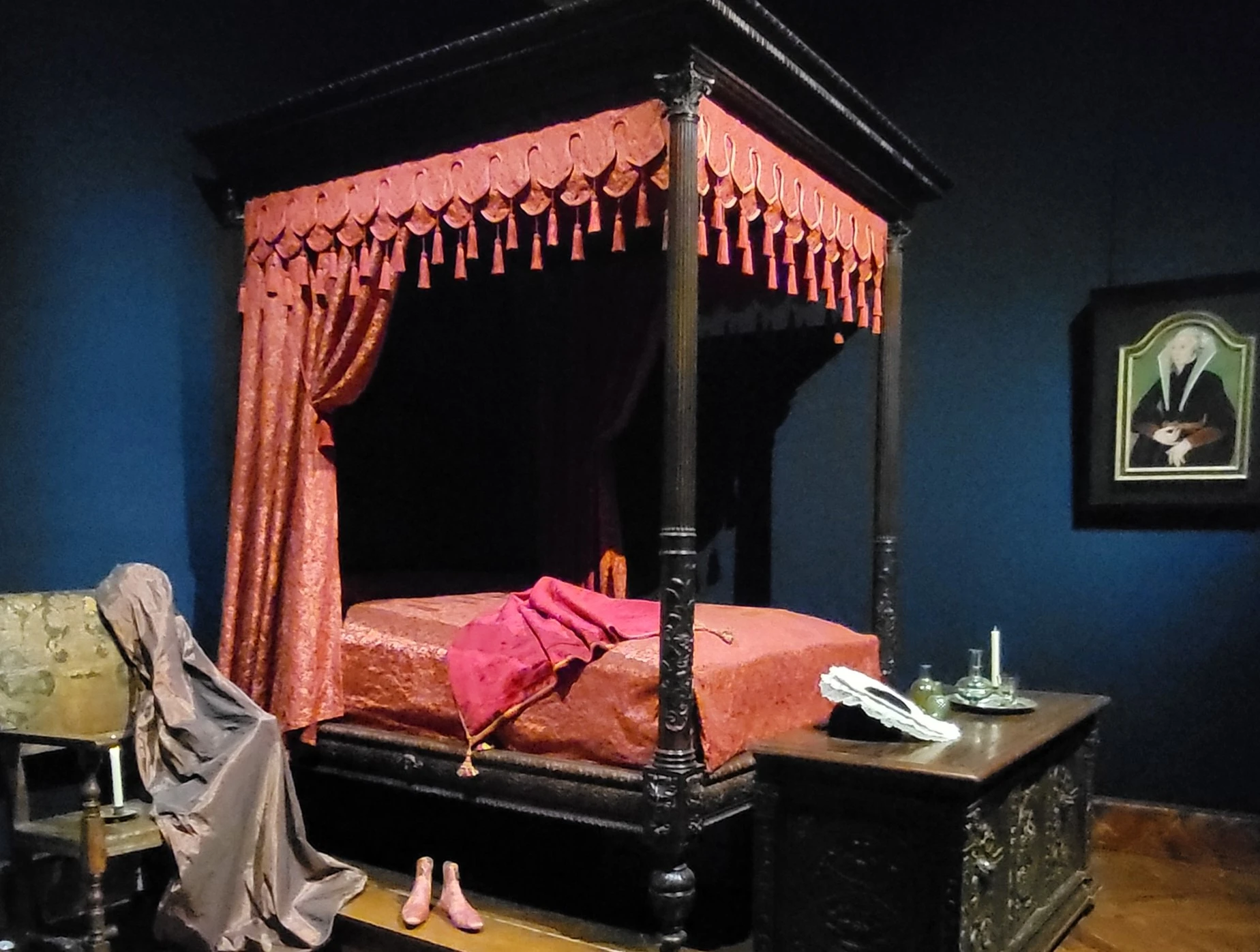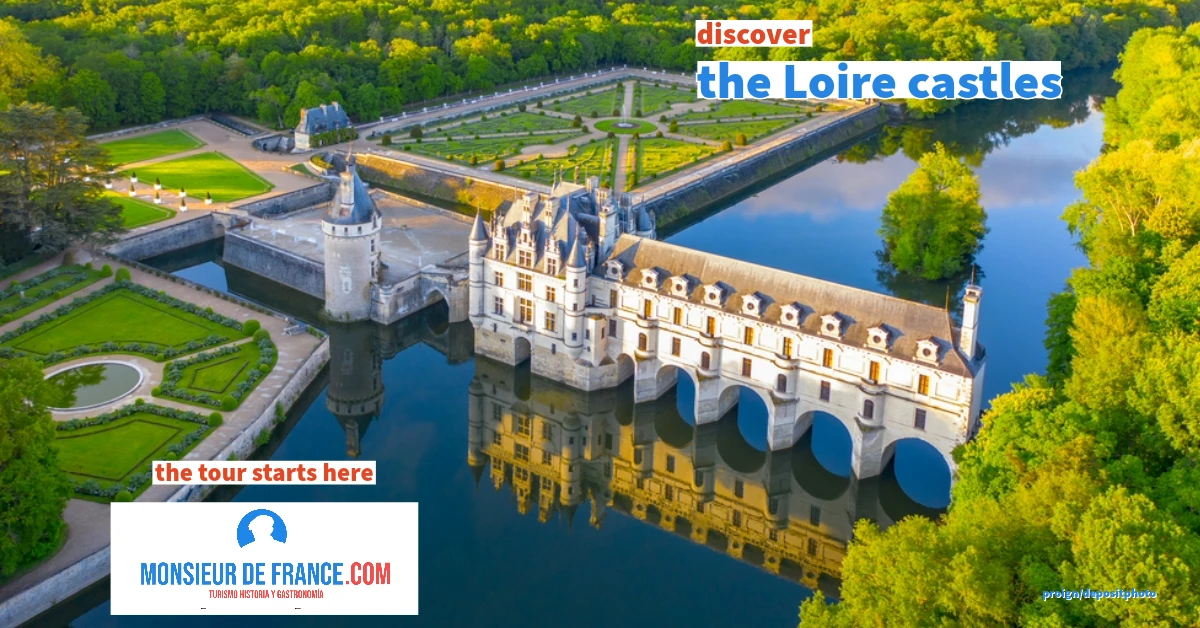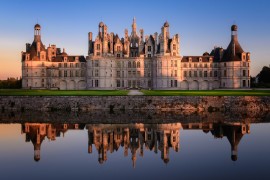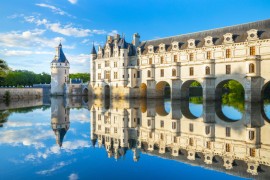What you are about to see
Entering the domain
You enter the estate through a large building containing the ticket office and a shop. On leaving this building, you will discover two things. Firstly, the château "en pleine terre". It is surrounded by water via two water mirrors , but the entrance side consists of a sort of canal that you cross to reach the Cour d'Honneur. The staircase door is superb, as are the corner towers. Secondly, contrary to what is shown in many photos, including those we have posted here, the château is not rectangular, but rather 'L' shaped.
Do the gardens first
They are magnificent. They date from the 19th century, the original gardens having disappeared a very long time ago. They were created at the time of the major renovation, or even reconstruction, of the château, which had been badly damaged and was saved by the de Biencourt family before they were ruined and sold it. The two water mirrors are recent additions, although they look as if they have always been there, since they were created in the mid-twentieth century from the remains of the moat. A brilliant idea that makes this place unique. Next, you can continue on to the gardens. This is in fact a large, romantic landscaped park that runs around the castle itself, with winding paths and bridges. You can take wonderful photos of the building reflected in the water. Along the west facade, you can see the remains of a fish pantry, built into the wall, from which the fish served at table were drawn. It takes about half an hour to walk around the house, and it's best to start your visit this way, as it puts you in the right mood to appreciate the beauty of the residence.
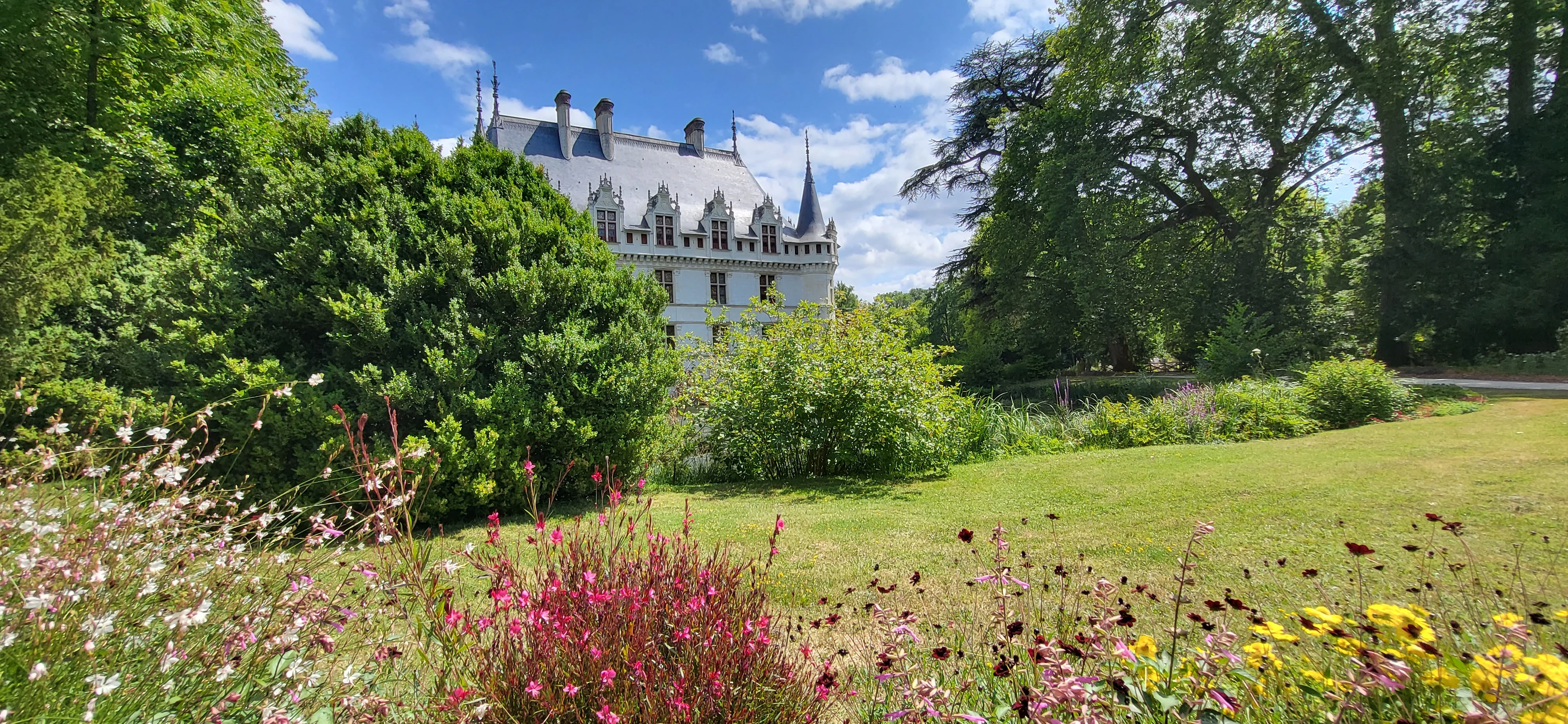 Château d'Azay seen from the gardens. Photo chosen by monsieurdefrance.com: Jérôme Prod'homme (c)
Château d'Azay seen from the gardens. Photo chosen by monsieurdefrance.com: Jérôme Prod'homme (c)
The castle itself
 The bed in the stunning blue room. Photo chosen by monsieurdefrance.com: Jérôme Prod'homme (c)
The bed in the stunning blue room. Photo chosen by monsieurdefrance.com: Jérôme Prod'homme (c)
Once you've explored the gardens, you' ll discover the interior of the château. It is remarkable. Before you do, take time to admire the facades, particularly the facade overlooking the main courtyard through which you will enter. Here you can take a closer look at the mullioned windows (T-shaped), the machicolations (fake, but so beautiful), the corner turrets... Some of the rooms you'll visit date back to the 19th century (the billiard room and dining room, for example), and show the lifestyle of a wealthy 19th-century French family. Other rooms take you back to the Renaissance, thanks to reconstructions of bedrooms (the Blue Room, for example). You'll pass through lounges and bedrooms, but not only that, as you'll also discover the kitchens. Everywhere you look, you'll see paintings, very old tapestries and even the roof structure. Don't forget to look at the stones. They are often magnificently and delicately carved, as in the staircase. The fireplaces are impressive.
 Inside the château, there's a beautiful model for children to discover and marvel at. Photo chosen by monsieurdefrance.com: jérôme Prod'homme (c)
Inside the château, there's a beautiful model for children to discover and marvel at. Photo chosen by monsieurdefrance.com: jérôme Prod'homme (c)
Summary of the history of the Château d'Azay le Rideau
A site that has always been fortified
Or fortified at least since the 11th or 12th century, since it was a certain Ridel d'Azay (or Rideau d'Azay) who gave his name to the château located in Azay, an ancient stronghold (which probably means "watered place") that was the seat of an important priory (part of which still remains in the Château grounds). This fortress has been mentioned several times in history, notably at the time of the Treaty of Azay le Rideau, when Henry II Plantagenet lost the battle against his son Richard the Lionheart and had to make him his legitimate heir and therefore the future King of England (which he would become). Similarly, in 1418, during the 100 Years' War, which saw the French fight against the English and the Armagnacs against the Burgundians, the castle was held by 350 Burgundians and they mocked the Dauphin, the future Charles VII, who was visiting the region. The castle was attacked and taken, the entire garrison was put to the sword and the village of Azay was destroyed to the extent that it was called "Azay le brûlé" for a long time.
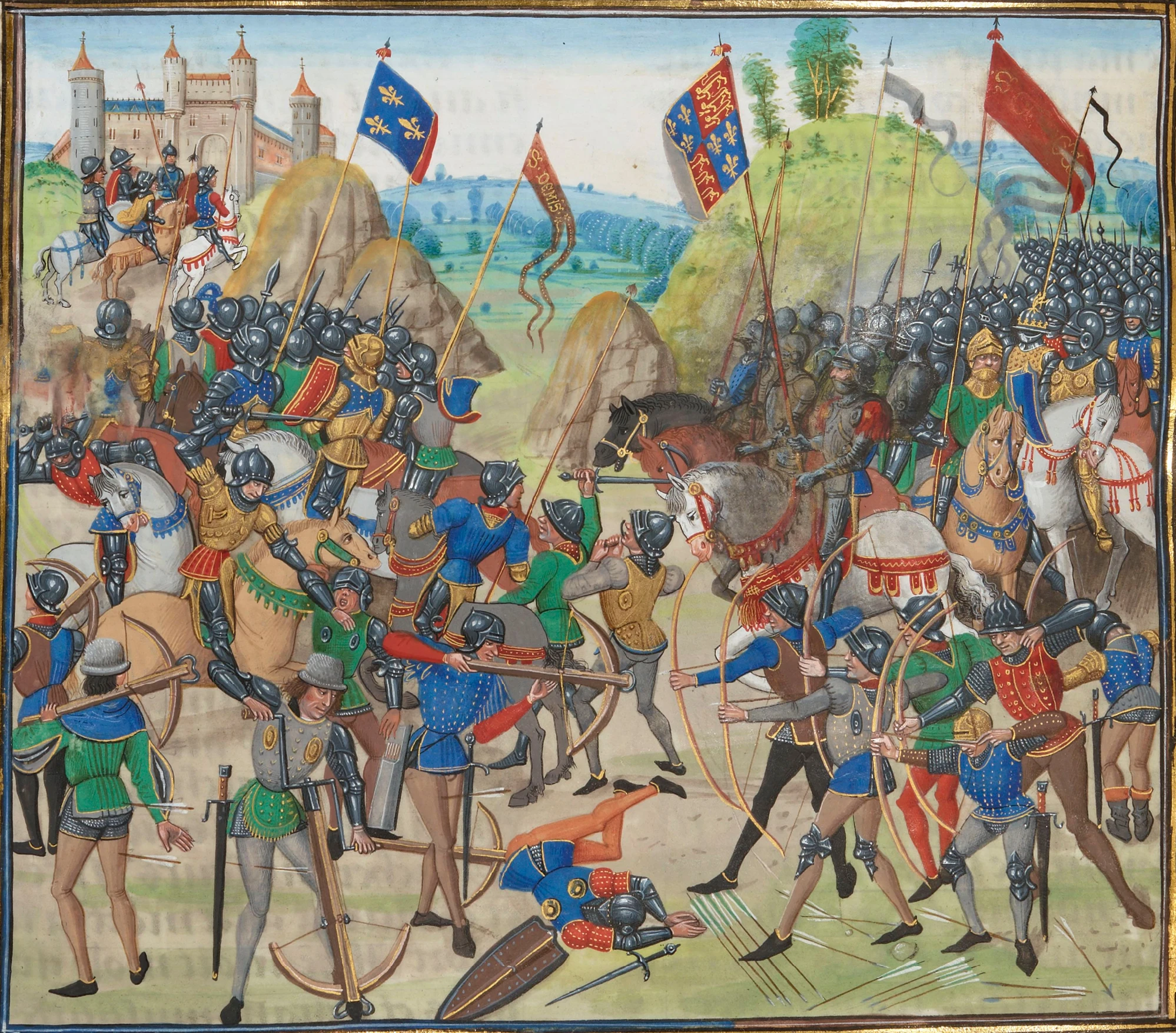 The battle of Crecy (during the 100 Years' War) in the chronicles of Jean Foissart (Bibliothèque Nationale de France).
The battle of Crecy (during the 100 Years' War) in the chronicles of Jean Foissart (Bibliothèque Nationale de France).
The first French Renaissance
The man who was to start turning Azay into the château we know today was a man called Gilles Berthelot. Inheriting the estate, he tore down most of the medieval castle to create a house in keeping with the Renaissance spirit of his time. He began work in 1518, and by 1523 the castle had largely taken on the appearance we know today , even though it was still defensive and surrounded by a moat rather than the water mirrors that were not added until more than 5 centuries later. In 1528, Gilles Berthelot's fortunes took a turn for the worse when the King of France, François 1st, turned his nose up at his accounts and discovered that many people had been helping themselves without being authorised to do so. Gilles' cousin Jacques de Beaune-Semblançais was hanged, and it is not impossible that the same thing would have happened to Gilles Berthelot had he not fled to Metz (outside the kingdom of France at the time) and then to Cambrai. He was fined heavily and the unfinished château was confiscated by the king , who gave it to a feudal Antoine Poton de Raffin de Pelcavary (who died before 1552), who gave it its L-shape by not closing off the main courtyard.
King François I of France, who confiscated the castle from Gilles Berthelot (portrait chosen by monsieurdefrance by Jean Clouet 1480 - 1541, Musée du Louvre, Paris)
The 19th century
Charles de Biencourt bought and saved Azay in 1791. Engraving by Pierre Charles Coqueret, Public domain, via Wikimedia Commons
Sold, resold, inherited, the château passed from hand to hand over several centuries, welcoming such great personalities as Louis XIII (whose portrait is in the château) and Louis XIV, who passed through Touraine. In 1791, when the Revolution had begun, the château was sold to Charles de Biencourt (1747-1824). He was one of the deputies to the Estates General and the Constituent Assembly, and an aristocrat to boot, who died in his bed (with a canopy, of course). It was he, and his descendants, who gave the château the appearance we know today, by keeping the most beautiful original features and adding their own period features, particularly in the 19th century, which was so passionate about the Middle Ages and the Gothic period, as well as the Renaissance, that some residences were rebuilt "in style". This was the case for Azay, where the roofs were corrected and decorated with machicolations. The very wealthy family collected works of art in this house, which they occupied for over 100 years. The château also had a rough time of it in 1871, when Charles Frédéric de Prusse, nephew of the King of Prussia, who was living at the château, thought an attempt had been made on his life when a chandelier fell. It took all the powers of persuasion of his staff, sensitive to the beauty of the setting, to prevent him from burning it. In 1899, a stock market crash forced Charles Marie de Biancourt to sell his property to pay off his debts. The château and the 250-hectare estate were sold to a certain Mr Arteau, a lawyer from Tours, who decided to keep just the land and sold the château to the state for 514,000 francs in 1905 (a small house could be bought for 30,000 francs). This marked the beginning of the public history of the Château, which is (admirably) managed by the Centre des Monuments Historiques, which in 2017 completed the biggest renovation of the château for a century.
Good to know
The château in Azay is known as d'Azay le rideau (Azay the Curtain) because its address is in this commune, and that's not very much, since only the gate is in the commune. The entire château and grounds are located in the neighbouring commune of Cheillé. Azay le rideau has just over 3,400 inhabitants. There are plenty of nice places to stop off for lunch or a drink, not far from the beautiful church of Saint Symphorien, whose facade was built a little after the year 1030, almost 1,000 years ago, the Château de l'Islette, which is larger than the Château d'Azay and is worth a visit, not least for its interiors, the covered market for exhibitions and the amazing Maurice Dufresne museum , which has a very varied collection, including some very old cars (Panhard, lorry, electric car from 1941, etc.) as well as a guillotine..) but also a guillotine (which would have cut more than 100 heads), that is to say nearly 3000 objects.
Azay le Rideau. Photo chosen by Monsieurdefrance.com: Pedro2009 via depositphotos.
Information and prices
Timetable :
You are almost certain to be able to enter the château before 5.00 pm (please note that access to the residence itself is blocked one hour before the site closes, which includes the park).
From 1st April to 30th June: 9.30am - 6.00pm
From 1 July to 31 August; 9H30 - 19H00
From 1st to 30th September: 9.30am - 6.00pm
From 1 October to 31 March : 9.30am to 5.15pm
Rates
(as at 6 September 2023, rates not guaranteed by Monsieur de France, go to the official website to check)
11.50 for an individual visit without discount (the cheapest of the Loire's most famous châteaux). You can also combine a visit to the Château d'Angers for a slightly higher price (around €16).
The guided tour is free if you register at the entrance (don't forget to take some change to thank the guide). Audio guides cost 3 euros. There are also audio guides for children.
It's free for under-18s, 18-25 year-olds from the European Union, disabled people and their carers, jobseekers (proof of less than 6 months' employment) and it's free on the first Sunday of the month from January to March and from November to December.
For reservations and all the latest information, visit the official Château d'Azay le Rideau website(managed by the Centre des Monuments Nationaux).
Closing :
1 January, 1 May and 25 December.
Azay le rideau : News / Geo / Web
By road
The château is located in Azay le Rideau, in the department of Indre et Loire, in the historic region of Touraine and the administrative region of Centre Val de Loire.
The GPS address is 19 rue Balzac 37 190 Azay-le-rideau. We are 25 minutes from Tours, 2 hours from Nantes, 2 hours 44 minutes from Paris (via the A10), 1 hour 15 minutes from Chambord, 42 minutes from Amboise and 38 minutes from Chenonceau.
By train
There is a station at Azay le rideau (Tours-Chinon line), with a ticket machine, located at Place de la Gare.
By plane
Paris Orly or Nantes Attlantique. Nantes Attlantique is the closest (2H05) and the smallest, so it's more convenient. You will need to hire a car to get to the château.
Websites :
The official Château d'Azay le Rideau website (useful for information on prices and opening times)
The official Touraine tourism website.
Loire Lovers: a fun website about the châteaux of the Loire.

